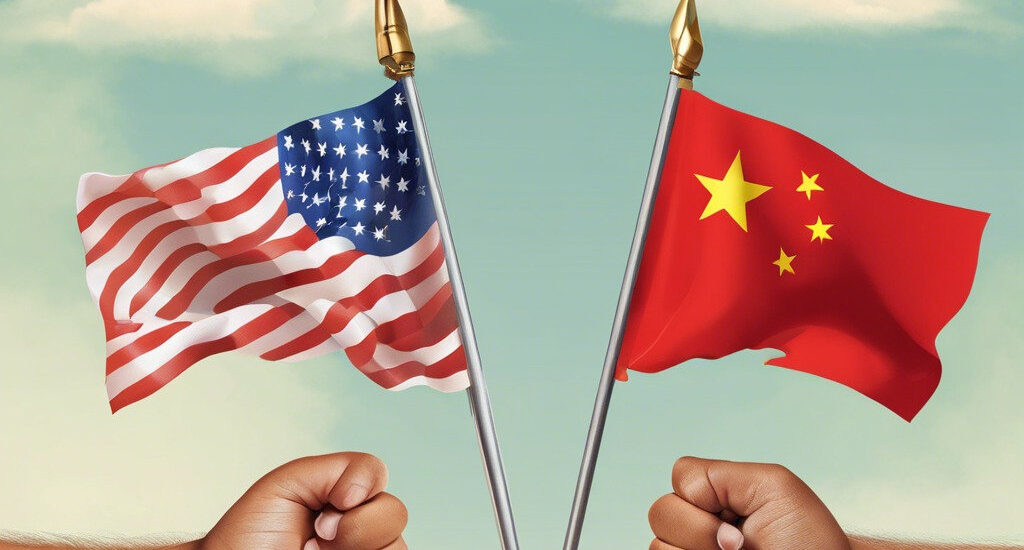- May 2, 2024
- Posted by: Anish
- Category: Feed

The US is somehow home to the most valuable electric vehicle producer in the world and as recently as 2016, the US had more EVs on the road than China did. Now China has raced ahead.
China accounts for six-in-ten of every EV sold worldwide, it also dominates the supply chain for the critical technology inside them: Lithium-ion batteries.
None of that happened by accident. As the 2000s dawned, roughly a century into the automobile age, Beijing correctly deduced that building a world-class export industry based around the internal combustion engine — displacing incumbents from the US, Germany, Japan and elsewhere — was an unlikely prospect. In 2001, Beijing launched an R&D program to develop batteries, motors and other EV-related technologies. This industrial policy, aided by supportive domestic banks, was matched about a decade later with the rollout of generous subsidies encouraging Chinese drivers to buy EVs.
The lesson here is, as one might think, that American free market capitalism somehow couldn’t deliver EVs the way China’s command-and-control did.
Washington has only lately fused to a greater degree around the idea of industrial protectionism. The green industrial policy of the Inflation Reduction Act i.e. subsidizing both the production and purchase of electric vehicles, plus their various components, provided they come with a rising share of domestic content. Imports, especially those from China, are subject to tariffs. Addressing climate change, while supported by a majority of Americans according to regular polling, gets either little support or outright hostility from the Republican Party.
Senator Bill Cassidy of Louisiana’s proposed Foreign Pollution Fee Act would effectively, and convolutedly, impose a carbon border tax (on similar lines as EU) on selected imports with higher carbon intensity than US goods, aimed explicitly at China.
China’s lead in EVs owes much to the fact that it pursued the outcome with single-minded purpose and no qualms about subsidizing it. The US has edged closer to that model, at varying internal speeds, in part because China moved first. Therein lies one of the chief risks to the pace of the EV project at a global level: China’s desire to realize its export ambitions and US determination to block them.
In addition, between 2019 and 2023, Chinese exports of electric vehicles grew from 0.5% of Europe’s EV market to 9.5% and are projected to reach 25% in 2025. China now exports more cars than Japan.
EVs also offer a hedge against China’s dependence on imported oil which, at roughly three-quarters of its consumption, is a higher share than it ever was for the US, even at its peak in the early 2000s.
On the other hand, China holds between 85% and 95% of production capacity for each of the major components of batteries, i.e. as well about 70% of global lithium refining capacity, according to Bloomberg NEF.
According to the International Energy Agency, appetite for lithium, copper, cobalt, nickel, graphite and rare earths will grow by up to 350% from 2022 to 2030. Nearly all lithium production is currently concentrated in Australia, Chile, Argentina and China and the latter dominates processing. A supply deficit could emerge as early as 2028.
The Lithium Triangle and India’s role in EV value chain?
After years of policy delays and a lithium price surge in 2022, former number-one producer Chile has lost market share to Australia, while others like Argentina are turning heads. Argentina could have up to a dozen lithium projects—many Chinese—running in two years. Argentina’s federal system gives provincial governments more leeway to strike deals, and M&A activity is picking up. The country is dogged by macroeconomic distortions and political uncertainty, but investor confidence is slowly recovering under pro-business President Javier Milei. In Bolivia, the third leg of South America’s lithium triangle, economic and geological conditions are considered less favourable.
Unlike Bolivia and Argentina, Chile has a free trade agreement with the United States, giving it a commercial advantage under the U.S. Inflation Reduction Act that prioritizes imports from FTA partners. Chile also has a newly minted modernized trade deal with the European Union.
For India, understanding the determinants of import behaviour of these critical minerals and their impact on economic variables is crucial for formulating effective trade policies and enhancing India’s competitiveness in the global market.
The Indian Product Linked Incentive (PLI) and Faster Adoption & Manufacturing of Electric Vehicles in India (FAME) schemes borrow heavily from the same playbook as Chinese, subsidizing both the production and purchase of electric vehicles, plus their various components, provided they come with a rising share of domestic content.
Once the battery giga factories are up and running, the focus will be on acquiring direct raw materials (which are not available in India), such as Lithium, Cobalt and Nickel, for establishing a dedicated and sustainable supply chain.
Global Value Chains integration involves assessing a country’s participation through backward or forward linkages and the length of its chains in specific industries. Importantly, understanding these linkages is crucial for enhancing efficiency, competitiveness, and sustainable development in the global economy.
India’s integration into global value chains (GVCs) for EVs and its import policy regime play crucial roles in shaping its trade dynamics.
